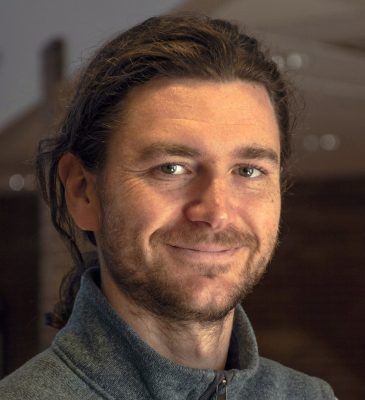A University of Wyoming molecular biologist whose research on tiny creatures called tardigrades included a project on the International Space Station is now part of a new national institute that will explore how organisms survive extremely dry conditions for long periods.

Thomas Boothby, of UW’s College of Agriculture, Life Sciences and Natural Resources, is one of the scientists from eight institutions who are part of the Water and Life Interface Institute (WALII). This new Carnegie-led initiative was just awarded a $12.5 million grant from the National Science Foundation.
“There are some desert plants and microorganisms, like tardigrades, which can lose up to 90 percent of their water and resume normal biological function within hours of being rehydrated. We want to know how they do it,” says Carnegie’s Sue Rhee.
Boothby and his colleagues at UW have been studying how diminutive tardigrades — less than half a millimeter long — can survive being completely dried out; being frozen to just above absolute zero, about minus 458 degrees Fahrenheit, when all molecular motion stops; heated to more than 300 degrees Fahrenheit; irradiated several thousand times beyond what a human can withstand; and survive the vacuum of outer space.
In 2020 and 2021, tardigrades from Boothby’s UW lab were part of an experiment on the International Space Station aimed at better understanding changes to their gene expression as they experienced stressful environments in space.
“It’s exciting to see that our work to better understand the durability of tardigrades has the potential to inform strategies for surviving climate change with minimal impact to the food supply and help identify conditions that could support life on other planets,” Boothby says. “The ability to survive extremely dry conditions for long periods is crucial to the life cycles of many species — including in plants, which can reproduce from desiccated pollen grains and grow from dried-out seeds. But tardigrades are particularly resilient.”
Other scientists who have committed to joining WALII are from the University of Wisconsin-Madison, Michigan State University, Washington University, the University of California-Merced, California State University-Channel Islands and Baylor University. They will examine the interface of water and life among plants, animals and fungi across four key areas:
— The evolutionary history of the ability to survive sustained low-water periods.
— The genetic and physical factors that determine an organism’s ability to survive in extremely dry conditions.
— How different organisms respond to the presence of water during the process of rehydration.
— And the link between protein structure and desiccation tolerance.
The institute scientists hail from a wide range of fields, including molecular biophysics, computer science, genomics, and cellular and evolutionary biology, as well as plant biologists with expertise in seed physiology. Senior scientists, early-career researchers, and both graduate and undergraduate students will comprise the team, with a goal of producing a new generation of scientific leadership.
“WALII will prioritize inclusion of individuals from a diversity of backgrounds, which will bring an array of perspectives to the table and enhance our ability to undertake creative problem-solving and tackle big questions from novel angles,” Rhee says.
The initiative also will spearhead outreach and education activities to raise awareness of drought, water quality impairments and climate change. Rhee, Boothby and Carnegie colleagues already have completed a pilot program teaching San Francisco-area children about tardigrades.
During the 2020-21 International Space Station project, Boothby participated in a “Story Time from Space” episode about tardigrades that was beamed from the station to children around the world.
This story was originally published on UW News.





